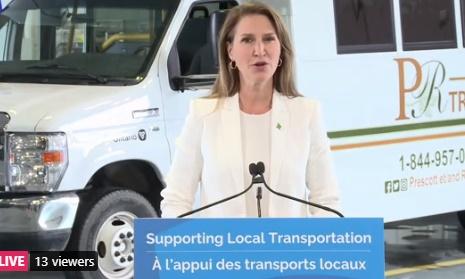The Province of Ontario has launched an online survey to gather valuable local input on regional transportation needs and priorities in Eastern Ontario.
Feedback from the Eastern Ontario Transportation Survey will be used to help develop a long-term plan that will improve the transportation network in the region. Anyone who does not wish to complete the survey online can request that a hard copy of the survey be mailed to them by contacting [email protected] or by calling 416-585-7305.
“Public input is crucial to shaping the future of transportation in Eastern Ontario; that is why I encourage everyone in the region to participate in the survey,” said Caroline Mulroney, Ontario Minister of Transportation. “As we gather feedback from the survey, we will continue to work closely with municipalities, Indigenous communities and organizations, transportation agencies, local businesses and the public so that we can deliver transportation that will make an impact for decades to come.”
The survey, which will remain open for six weeks until September 23, seeks input on how people and businesses move across the region, transportation concerns as Ontario reopens, and how the province can support better travel and priorities for the transportation system.
This survey builds on the province’s recent actions to improve transportation across Eastern Ontario. This includes moving forward with widening Highway 17 from two lanes to four between Arnprior and Renfrew, providing up to $1.2 billion for Stage 2 of the Ottawa LRT, extending the Community Transportation Grant Program funding for two more years in 10 Eastern Ontario communities and more.
The Eastern Ontario plan area covers approximately 44,000 kms, stretching from the District of Muskoka and the County of Hastings in the west, south to Prince Edward County, east to the United Counties of Prescott and Russell, and north to the County of Renfrew. In addition to the District of Muskoka, the County of Haliburton is also included in the plan area. This region is home to almost two million people and nearly one million jobs.


